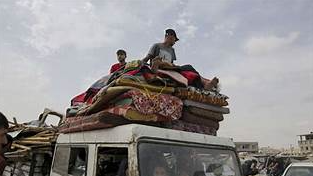Some have lamented that a bloodless AI-generated image has captured more people’s attention than real footage of the war. But it still has its own power
In recent days, a striking image has gone viral, showing tents in a refugee camp supposedly located in southern Gaza, with the phrase “All Eyes on Rafah” spelled out across them. The image, while claiming to represent a real-world situation, is in fact AI-generated. Despite its artificial nature, the image has taken over social media, with over 46 million shares on Instagram alone. Some are calling it the most-viewed AI image ever created, underscoring its wide-reaching impact.
The image’s success highlights the growing role of artificial intelligence in shaping public perception, especially during times of conflict. Some critics have expressed concern that an AI-generated image could garner more attention than actual footage from the war, which often depicts the true horrors faced by those in the conflict zone.
Despite its lack of authenticity, the “All Eyes on Rafah” meme carries a significant power. It encapsulates the global attention directed towards Gaza and the suffering of its people, even if it does so through a simulated representation. The viral image draws attention to the humanitarian crisis in the region, emphasizing the urgency of the situation.
While it might not have the visceral impact of actual war footage, the meme has helped amplify the conversation around Rafah, a city at the heart of the conflict. The fact that it has gone viral speaks to the effectiveness of social media in driving global awareness, regardless of the medium through which it is conveyed.
The meme has also sparked debate about the role of AI in modern warfare narratives. Is it a tool that enhances awareness, or does it distort the realities of conflict by presenting a sanitized or manipulated version of events?
Ultimately, the meme is a reflection of how technology—whether AI-generated or real—can shape the way the world engages with tragedies. Its viral spread suggests that, in an age of digital media, both real and synthetic images hold a unique power to influence global discourse on conflict.

